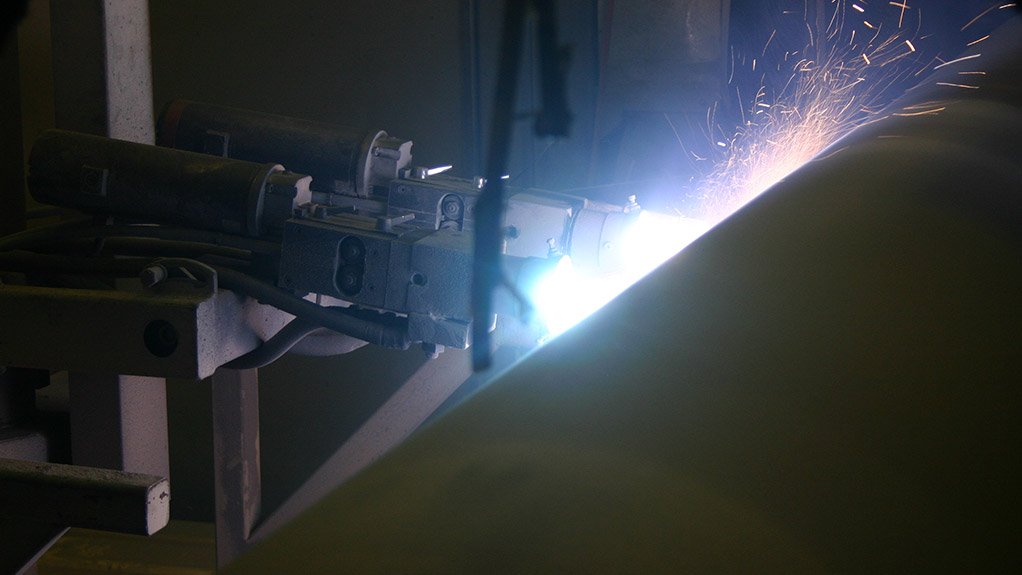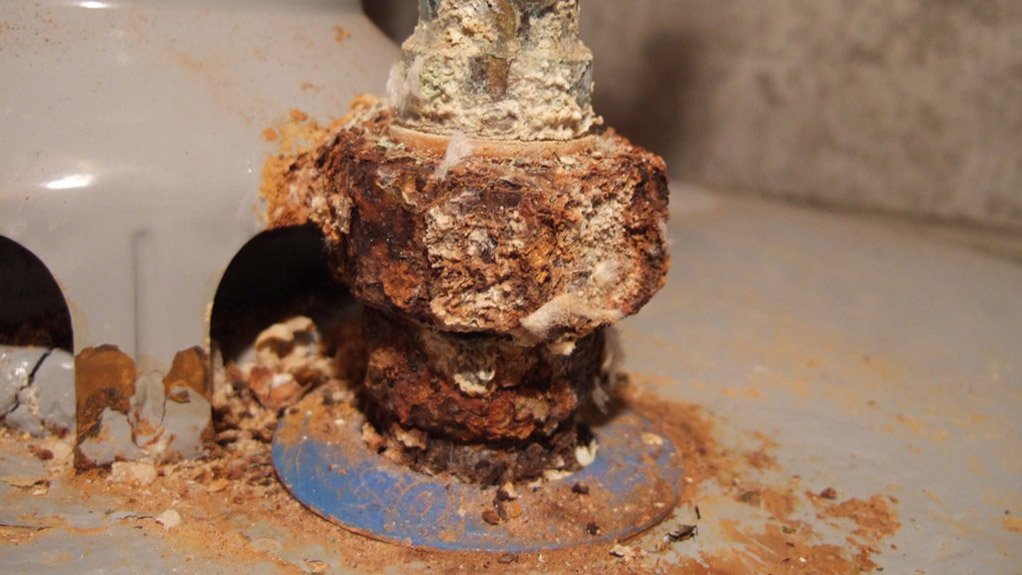Thermal spray making a comeback in refineries



THERMAL SPRAY NATURE All thermal spraying processes rely on the same principle of heating a feedstock, accelerating it to a high velocity, and then allowing the particles to strike the subtrate
CORROSION CONCERN Though failure can occur in a range of temperatures, corrosion becomes a significant concern in steel in temperatures from 0 °C to 149 °C
The use of thermal spray has in recent times gathered momentum in oil refineries because it prevents the ageing and replacement of various types of equipment and tubing components, says wear, corrosion, hard-facing and applications product supplier Weartech technical manager Adam Wintle.
Weartech has an ongoing distribution contract with a company that supplies Southern African oil refinery (Sapref) with thermal spray to repair worn components and incorrectly machined parts for light and heavy industrial equipment.
“Several people working at Sapref, located in KwaZulu-Natal, are contracted to do grip blasting and special paint coatings. The same company that is contracted to do this uses thermal spray aluminium equipment,” explains Wintle, adding that the thermal spray is applied after blasting to prevent corrosion under insulation (CUI).
“CUI is a common problem in the refin- ing, petrochemicals, power, industrial, onshore and offshore industries. CUI is difficult to detect, owing to the insulation cover that masks the corrosion problem, and it usually isn’t detected at all, until it is too late,” he says.
Wintle explains that the problem occurs on carbon steels and 300 series stainless steels in oil refineries. He points out that, on carbon steels, it manifests as generalised or localised wall loss, often as pitting and corrosion-induced stress corrosion cracking (CISCC) on stainless steel pipes.
“Though failure can occur in a range of temperatures, corrosion becomes a significant concern in steel in temperatures from 0 ºC to 149 ºC and it is most severe at about 93 ºC.
“CISCC rarely occurs when operating temperatures are constantly above 149 ºC. CUI is caused by the ingress of water into the insulation. The water can come from rainwater, leakage, deluge system water and wash water, or from condensation as a result of temperature cycling or low- temperature operation such as refrigeration units,” he explains.
Wintle notes that it is widely known that the results of CUI are costly and that it can account for as much as 40% to 60% of a company’s piping maintenance costs.
“This can result in repairs costing millions of rands and a significant amount of downtime. Most studies on the topic involve all forms of corrosion and their associated costs, without providing the individual cost of corrosion related to insulation,” he adds.
Wintle points out that a study, completed in 2001 by a research team of corrosion specialists in the US, reports the direct cost of CUI to be $276-billion a year with this number potentially doubling when indirect costs are also considered.
“The CUI prevention philosophy of many large petrochemical companies has been an inspection-free, maintenance-free concept. Insulated systems, particularly piping systems, are expected to have a service life of 25 to 30 years. The evaluation of life-cycle savings has led to the consideration of new, simple approaches to preventing CUI,” he says.
All thermal spraying processes rely on the same principle of heating a feedstock, which he notes, is accelerated to a high velocity, allowing the particles to strike the substrate.
Wintle explains that the particles will deform and freeze onto the substrate and that the coating is formed when millions of particles are deposited on top of each other.
“The first step of any coating process is surface preparation. This is done by cleaning and white metal grit blasting the surface to be coated. Masking techniques may be adopted for components that need coating only for specific areas.
“The second step is to atomise the aluminium, which is done by introducing the feedstock material into the heat source. The heat source may be produced by either chemical reaction or electrical power,” he says.
Wintle notes that the particles are then accelerated to the substrate by the gas stream and deform on impact to make a coating. Finally, the coatings are inspected and assessed for quality using either mechanical or microstructural evaluation methods.
Wintle adds that the two common thermal spray application techniques are wire flame spray and twin-wire electric arc spray.
“Adhesion to the substrate is considered largely mechanical and depends on the work piece being exceptionally clean and suitably rough. Roughening is achieved through grit blasting the surface until achieving white metal condition with a sharp, angular profile in the 50 µm to 100 µm range,” he says, noting that flame and arc spraying require relatively low capital investment and are often applied in workshops and on site.
Comments
Press Office
Announcements
What's On
Subscribe to improve your user experience...
Option 1 (equivalent of R125 a month):
Receive a weekly copy of Creamer Media's Engineering News & Mining Weekly magazine
(print copy for those in South Africa and e-magazine for those outside of South Africa)
Receive daily email newsletters
Access to full search results
Access archive of magazine back copies
Access to Projects in Progress
Access to ONE Research Report of your choice in PDF format
Option 2 (equivalent of R375 a month):
All benefits from Option 1
PLUS
Access to Creamer Media's Research Channel Africa for ALL Research Reports, in PDF format, on various industrial and mining sectors
including Electricity; Water; Energy Transition; Hydrogen; Roads, Rail and Ports; Coal; Gold; Platinum; Battery Metals; etc.
Already a subscriber?
Forgotten your password?
Receive weekly copy of Creamer Media's Engineering News & Mining Weekly magazine (print copy for those in South Africa and e-magazine for those outside of South Africa)
➕
Recieve daily email newsletters
➕
Access to full search results
➕
Access archive of magazine back copies
➕
Access to Projects in Progress
➕
Access to ONE Research Report of your choice in PDF format
RESEARCH CHANNEL AFRICA
R4500 (equivalent of R375 a month)
SUBSCRIBEAll benefits from Option 1
➕
Access to Creamer Media's Research Channel Africa for ALL Research Reports on various industrial and mining sectors, in PDF format, including on:
Electricity
➕
Water
➕
Energy Transition
➕
Hydrogen
➕
Roads, Rail and Ports
➕
Coal
➕
Gold
➕
Platinum
➕
Battery Metals
➕
etc.
Receive all benefits from Option 1 or Option 2 delivered to numerous people at your company
➕
Multiple User names and Passwords for simultaneous log-ins
➕
Intranet integration access to all in your organisation




















